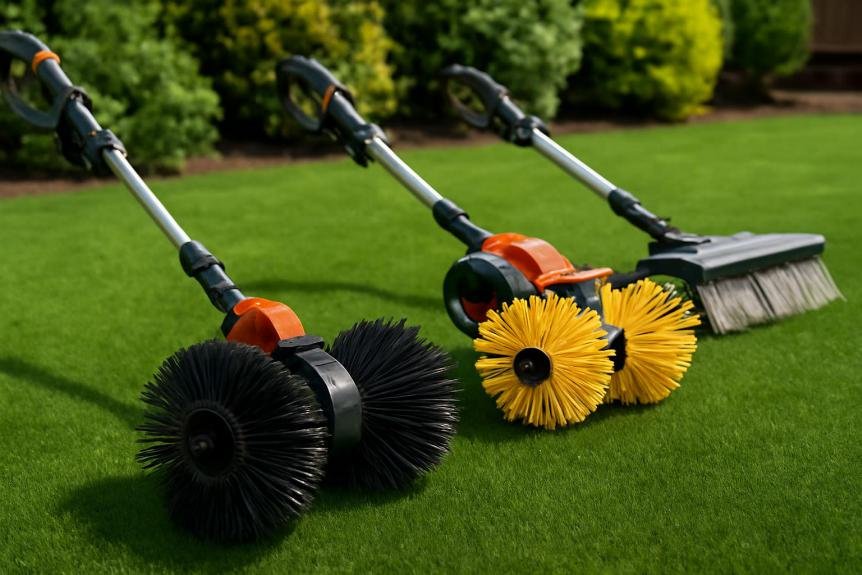Easy Guide: How to Clean Felt Shoes Safely & Effectively
Caring for felt shoes can be tricky, but it’s essential for keeping them looking great and extending their life. I’ve found that with the right approach, you can tackle stains and dirt without damaging the delicate material.
I’ll guide you through the best methods to clean your felt shoes safely and effectively. Whether it’s a light refresh or a deep clean, I’ve got the tips and tricks you need to maintain your cozy footwear.
Understanding Felt Shoes
Before diving into the cleaning process, it’s crucial to understand what felt shoes are and why they’re unique. Felt is a textile that is produced by matting, condensing, and pressing fibers together. This non-woven fabric is known for its durability, insulating properties, and resistance to wear and tear. When it comes to shoes, felt offers a snug and warm fit, making it a popular choice for colder climates.
Felt shoes are often handmade, which adds to their charm but also means that each pair requires special care. My experience with felt footwear has taught me that the material’s density and texture can vary depending on how it’s manufactured. This affects not only the shoe’s overall feel but also its cleaning requirements.
One significant aspect of felt shoes is their susceptibility to water damage. Although felt is moisture-resistant to a degree, prolonged exposure to water can change the shape and fit of your shoes. That’s why it’s essential to use minimal water during cleaning and to dry them properly.
Additionally, felt’s nature means it can attract lint and dust quite easily. Regular maintenance is not just about aesthetics but also about preserving the quality of the material. The accumulation of dirt and oils can cause the fabric to degrade over time, so it’s beneficial to establish a consistent cleaning routine.
Lastly, remember that some felt shoes might have a combination of materials, with parts that include leather or rubber. This requires a more nuanced approach to cleaning since each material will have its own set of care instructions. Spot testing any cleaning method on a small, inconspicuous area can prevent unwanted surprises and ensure the longevity of your favorite felt footwear.
Armed with this understanding of what felt is and the particularities of caring for it, you can approach the task of cleaning your felt shoes with confidence.
Preparing for Cleaning
Before diving into the nitty-gritty of cleaning felt shoes, it’s crucial to properly prepare. This helps prevent damage and ensures that they come out looking as good as new. Here’s what you’ll need to get started:
- Soft-bristle brush: to gently remove loose dirt.
- Lint roller: for picking up any dust and hair.
- Mild detergent: specifically designed for delicate materials.
- Clean cloth or sponge: to apply cleaner and water.
- Small bowl of water: for mixing with detergent.
First off, I’ll remove any excess dirt and debris from the surface with the soft-bristle brush. Using gentle strokes, I’ll ensure that all nooks and crannies are free from particles that could potentially cause abrasions during the wet cleaning process.
Next, I’ll tackle the lint and pet hair that felt shoes seem to attract like a magnet. By rolling a lint roller over the surface, I can make sure that the worst of the fluffy stuff is gone before any water comes into play.
After that, I’ll prepare the cleaning solution. It’s important here to choose a mild detergent that’s suitable for wool or delicate fabrics. I’ll mix a small amount into a bowl of water until it’s well integrated but not too sudsy – I don’t want to saturate the felt with excess soap.
Armed with a clean cloth or sponge, dipped lightly into the cleaning solution, I’ll start working on areas that need attention. It’s vital to remember that dabbing is key; I don’t want to soak the material or rub too hard, which could cause the fibers to become misshapen.
I’ll always remember to perform a spot test in an inconspicuous area. This step may seem small, but it’s a game-changer for avoiding irreversible damage to the unique properties of felt. If there are different materials incorporated in the shoes, like leather or embellishments, I’ll need to pay extra attention to not causing any harm.
Each section of the shoes should be tackled methodically, ensuring consistent treatment across the board. This systematic approach not only maintains the integrity of the felt but also gets me one step closer to revitalizing my cherished felt shoes.
Dry Cleaning Methods
When I’ve tackled the pre-cleaning stage, moving onto Dry Cleaning Methods for felt shoes is crucial. This step helps maintain the shape and integrity of your footwear without the risks that water might introduce. I’ll walk you through a couple of techniques that have proven successful.
Firstly, there’s the absorbent powder trick, effective for removing oily stains and freshening up the insides. I’ve used baking soda for this trick with excellent results. Here’s what you do:
- Sprinkle a generous amount of baking soda inside your shoes.
- Let it sit overnight to absorb odors and grease.
- In the morning, empty out the baking soda.
Another dry method involves using a special rubber sponge, also known as a suede and nubuck block, designed to crumble slightly as it’s used, thereby lifting dirt from the surface without dampening the material. Just gently rub the block over the stained or dirty areas and see the difference. This method is particularly good for scuff marks and doesn’t leave any residue.
For stubborn dirt that’s clinging on, I sometimes turn to fine-grit sandpaper. Lightly buffing the surface with it can remove pilling and restore the texture of the felt. However, be gentle to avoid thinning the material.
Lastly, if these methods don’t do the trick, consider a professional dry cleaner specializing in felt. They possess specialized equipment and solutions that are safe for these delicate materials. This option might be a bit costlier, but it ensures your felt shoes are in expert hands.
Remember, each felt shoe is a bit different, and the color and condition could affect how these dry cleaning methods work. Always do a quick test in an inconspicuous area to guarantee there won’t be any unwanted surprises.
Removing Stains
When tackling stains on felt shoes, timing is crucial. The longer a stain sits, the more difficult it’s to remove. I’ve found that gentle, immediate action often prevents a permanent blemish.
For liquid spills, I always blot the excess with a clean, dry cloth to prevent the moisture from setting into the fibers. It’s important to blot rather than rub to avoid working the liquid deeper into the material. After removing as much of the spill as possible, I use a mild soap solution—a mixture of warm water and a small amount of dish soap—to dab at any remaining residue. A soft-bristled brush can be helpful to lightly scrub the area, but I take care not to distort the felt’s texture.
Certain stains like ink or wine may require a stronger solution. Rubbing alcohol has been my go-to for these tougher spots. I apply it sparingly with a cotton swab, testing first on an inconspicuous area to ensure it doesn’t affect the color or integrity of the felt. Here’s how I apply it:
- Dab the cotton swab in alcohol.
- Gently treat the stained area with the swab.
- Blot away the moisture with a dry cloth.
For organic stains, such as those from food or mud, creating a paste with baking soda and water offers a gentle yet effective cleaning alternative. I spread the paste over the stained area, let it sit for a few hours, then brush it away once it’s dry. This method not only helps remove the stain but also deodorizes the shoe material.
To maintain the uniform appearance of the felt, I clean the entire shoe rather than just spot-treating. It might seem like more work, but this approach ensures there aren’t any uneven spots or rings left from cleaning. Always air dry the shoes away from direct heat or sunlight to preserve their shape and color. With patience and the right technique, even the most stubborn stains have met their match.
Deep Cleaning Felt Shoes
When regular spot cleaning isn’t enough to keep your felt shoes looking their best, it’s time to consider a more thorough approach. Deep cleaning can rejuvenate older felt shoes or tackle a multitude of stains from a challenging day out. Before I dive into the process, it’s crucial to understand that patience and gentle handling are key to maintaining the integrity of the felt.
First, remove any loose dirt by gently patting the shoes with your hands or softly tapping them together. A vacuum with a soft brush attachment can also be effective in picking up lingering dirt without stressing the felt fabric. It’s important not to rub the shoes harshly, as this can push dirt deeper into the fibers.
Next, prepare a cleaning solution of warm water and a few drops of mild detergent. Using a sponge, apply this to the entire surface of the shoe, working up a light lather. It’s best to treat both shoes even if only one has visible stains to ensure they maintain a uniform color and texture once dry.
For persistent problem areas, a mixture of equal parts white vinegar and water can be dabbed onto the stain after the soaping step. Vinegar is a natural deodorizer and can help in breaking down tough stains without damaging the felt. Be sure to apply it sparingly and only to the affected areas.
After cleaning, rinse the sponge and go over the shoes with clean water to remove any soap residue. Excess moisture should then be blotted out with a clean, dry towel. Reshape the shoes as best as possible by hand to prevent them from drying in a distorted form. This step is vital for ensuring the shoes remain comfortable and retain their original look.
Finally, remember to dry the shoes slowly and naturally. Avoid direct sunlight or heat, which could cause the felt to shrink or become misshapen. A fan can help circulate air around the shoes for even drying. If you’re in a bind for time, stuffing the shoes with paper towels or a dry towel can help absorb moisture more quickly, but this should not replace air drying.
It’s also worth noting that while felt is a durable material, excessive water exposure can compromise its longevity. Therefore, this deep cleaning method should be used judiciously and only when necessary to extend the life of your felt shoes.
Conclusion
Keeping your felt shoes in top condition doesn’t have to be a daunting task. With the right approach and a touch of care, you’ll find that maintaining that fresh, clean look is entirely achievable. Remember, it’s all about being gentle and patient throughout the cleaning process. Tackle stains with confidence, knowing that a simple solution of mild detergent or white vinegar can work wonders. And when it comes to drying, let time do its magic, steering clear of harsh heat sources. Stick to these guidelines, and you’ll enjoy your pristine felt shoes for many outings to come.











[…] the direction of the suede’s grain to avoid harm. If dealing with suede moccasins, employ a suede brush, specifically designed to lift dirt and fluff the nap of the suede without causing […]